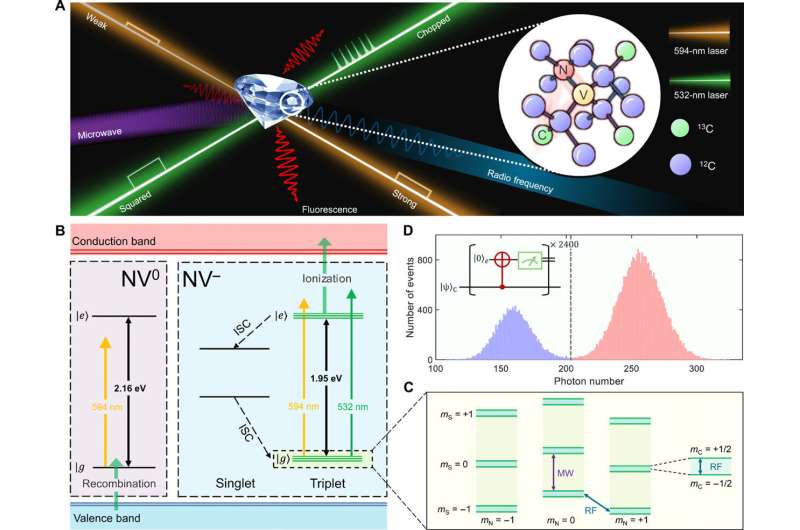Measurement beyond standard quantum limit realized with nitrogen-vacancy centers in diamond

Many measurements are limited by standard quantum limit (SQL). SQL is defined as the measured noise levels set by quantum mechanics. Quantum entanglement can be used to beat SQL and approach an ultimate limit called Heisenberg limit (HL). Sub-SQL measurements have been realized in many systems under extreme conditions and sensors in these systems are not suitable for realistic measurements under ambient conditions.
Nitrogen-vacancy (NV) centers in diamond can be utilized as sensors for electron and nuclear magnetic resonance. They can work well in environmental conditions due to the protection of solid crystal lattice. An entire sub-SQL measurement process based on a single NV center includes initialization of NVs spins, entanglement under ambient conditions, detection of physical quantities, and readout of results. Difficulties now emerged on initialization and entanglement of NV.
A research team led by Prof. Du Jiangfeng from University of Science and Technology of China (USTC) of the Chinese Academy of Sciences realized a sub-SQL measurement under ambient condition with NV centers in diamond, and found that the use of entangled sensors can beat SQL and realize more accurate measurements. This study was published in Science Advances.
The researchers applied a real-time feedback technique to initialize spins to a highly pure state, and achieved the joint initialization of NV charge state, electron spin, and two nuclear spins with high fidelity.
They replaced squared pulse laser with chopped laser sequence for polarization of electron spin, improving the corresponding laser fidelity from 90% to 97.7%.
Additionally, the researchers optimized experiment setups to better control experimental conditions. Through sophisticated configuration for heat isolation and apropos proportion-integration-differentiation (PID) parameters for feedback, they realized a relatively low temperature fluctuation of 0.5mK during experiments and a highly stable magnetic field with the volatility of 1ppm.
This work opens up new perspectives for the investigation of solid-state spin systems, and lays the foundations for quantum sensing and computing.
More information: Tianyu Xie et al, Beating the standard quantum limit under ambient conditions with solid-state spins, Science Advances (2021). DOI: 10.1126/sciadv.abg9204
Journal information: Science Advances
Provided by Chinese Academy of Sciences





















